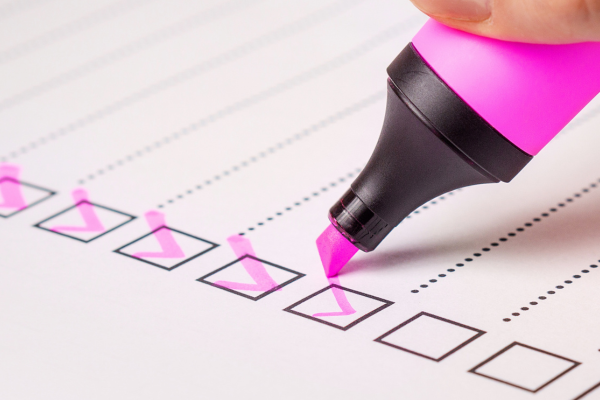
Fostering independence in children with ADHD can feel like a daunting task. While it might feel like navigating a wild rollercoaster ride filled with twists and turns, the journey is both achievable and rewarding! Many parents share the challenge of encouraging their children to tackle attention hurdles, impulsivity, and executive functioning. But fret not! With a structured and supportive approach, children with ADHD can develop essential skills to thrive.
Buckle up, we are here to share some tips on how to turn the quest for independence into a fun-filled journey. Let’s dive into how small steps can lead to big wins!

Understanding ADHD and Independence
Children with ADHD often face unique challenges that can interfere with their ability to manage daily tasks, complete schoolwork, or even maintain routines. Impulsivity may cause them to act before thinking, while difficulties with sustained attention might lead to incomplete tasks.
But here’s the good news: with a little guidance and creativity, these kids can learn the art of independence! It’s all about breaking things down into bite-sized pieces and cheering them on as they conquer each challenge. The process requires patience, consistency, and tailored strategies.

1. Start with Clear, Achievable Goals
Setting small, achievable goals is the cornerstone of helping children with ADHD become more independent. Rather than expecting them to take on complex responsibilities all at once, start by setting clear, achievable goals that your child can tackle. Instead of saying, “Clean your room!” try breaking it down into mini-missions: “Pick up the toys,” “Put the clothes away,” and “Make your bed.” Each task is a stepping stone on the way to victory!
2. Use Visual Supports
Children with ADHD benefit from visual cues that help remind them of tasks and responsibilities. Create colorful charts, checklists, or schedules that they can follow. When they complete a task, let them mark it off like a treasure hunter finding gold! Visual support can be an excellent way to increase independence by reducing reliance on verbal instructions. Seeing their progress will motivate them to keep going.
3. Teach Time Management Skills
Time management can be especially challenging for children with ADHD. They may have difficulty estimating how long tasks will take or staying focused on a task for extended periods. Tools like timers, clocks, or apps can help children develop a better sense of time and how to manage it.
Start with short quests (like 10 minutes of homework) followed by a short break—like leveling up in a game! Over time, they’ll learn to manage longer tasks.
4. Encourage Decision-Making
Independence grows when children are given opportunities to make decisions, even small ones. Give your child the chance to make decisions, whether it’s picking out clothes, choosing a snack, or deciding the order of their homework tasks. Letting them choose empowers them and helps them feel like the hero of their own story.

5. Use Positive Reinforcement
Children with ADHD often face criticism for behaviors that stem from their condition, so it’s crucial to create an environment where positive reinforcement is used to encourage independence. Celebrate every little victory your child achieves, whether it’s completing a task or making a good choice. This will boost their confidence and encourage them to tackle the next challenge.
Reward systems, like sticker charts or points, can be motivating for younger children. For older children, verbal praise or privileges can serve as effective reinforcements!
6. Foster Problem-Solving Skills
Independence is closely tied to a child’s ability to problem-solve on their own. When your child encounters difficulties, resist the urge to jump in and fix the problem immediately. Instead, guide them through problem-solving steps. Use pictures, diagrams, or visual storyboards that outline the steps of problem-solving. For example, you might create a chart that shows a problem-solving process, with images representing each step, such as identifying the problem, brainstorming solutions, and choosing one to try. Encourage your child to use these visuals to guide their thinking.
Teaching your child how to break down a problem into smaller steps helps them build critical thinking skills. Over time, they will become more confident in tackling challenges independently.
7. Practice Self-Monitoring
Self-monitoring is a vital skill for children with ADHD to develop. Encourage them to reflect on their actions and behaviors, and guide them through the process of finding a solution. Teach them to ask themselves questions like, “Did I complete my quest?” or “What could I do better next time?” This reflection helps them become aware of their actions and empowers them to make positive changes on their own.
8. Gradually Reduce Support
One of the most challenging aspects of fostering independence in children with ADHD is finding the balance between providing support and allowing them the space to act independently.
As your child grows in confidence and skills, it’s time to slowly pull back your support. Start by modeling tasks, then guide them, and finally let them take the lead. Think of it like training your sidekick to become the hero of their own story.

Conclusion: Small Steps, Big Wins!
Independence is not built overnight, but with consistent, small steps, children with ADHD can learn to manage their responsibilities and make decisions on their own. As parents and educators, our role is to provide the tools, support, and encouragement they need to succeed. But with each small step, you’ll be amazed at how much they can achieve! So, let’s cheer them on, celebrate their victories, and empower them to become the brave adventurers they are meant to be.
Together, we can turn this journey into a fun-filled adventure where independence becomes not just a goal, but a grand achievement!
You can visit our website www.oneintervention.org, to access a wealth of resources on early childhood development. We believe that every child deserves the chance to reach their full potential. You can also find us on Instagram and Facebook @oneintervention
